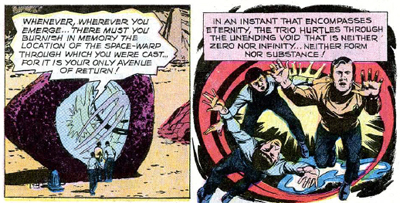Perhaps what is most surprising about Context is for Kings is just how conventional it is.
The Vulcan Hello and Battle at the Binary Stars were very much atypical episodes of Star Trek, an opening two-parter designed to demonstrate a lot of how Star Trek: Discovery would be different from the earlier series in the franchise. The two-parter introduced a new captain and a new ship, only to kill the captain and destroy the ship at the climax of the story. The primary character ended these opening two episodes as a disgraced mutineer, sentenced to life in prison.

In darkness dwells.
Although the two-parter was traditional in some respects, its structure was consciously designed to subvert a lot of the expectations of previous pilot episodes. Typically, Star Trek pilots find a new crew coming together in a way that sets the tone for the following series. In contrast, The Vulcan Hello and Battle at the Binary Stars joined the Shenzhou at the end of its seven-year mission, and reduced it to floating wreckage. It was a subversive (if not entirely unpredictable) narrative decision, a clear attempt to contextualise Discovery as a modern television series.
All of this means, of course, that Context is for Kings finds itself cast in the role of a conventional Star Trek pilot. In many ways, Context is for Kings is clearly intended as reassurance that Discovery is still fundamentally Star Trek, in spite of the tweaks and alterations that have been made to the framework of the series.

Seeding the future.
Filed under: Star Trek | Tagged: fungus, gabriel lorca, magic mushrooms, michael burnham, phase ii, star trek, star trek: discovery, Star Trek: The Animated Series, war | 19 Comments »

























